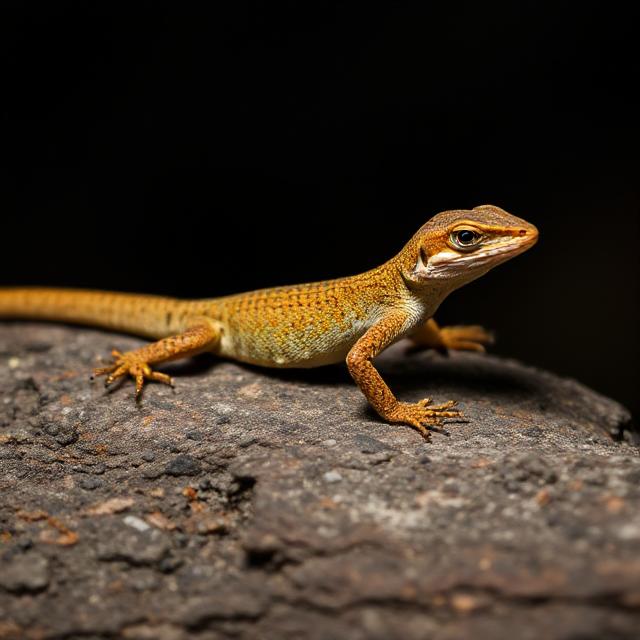🦎 Anole Lizard: General Overview
Anoles are small, agile lizards best known for their color-changing ability, throat fan (dewlap), and quick movement. With over 400 species, the Green Anole (Anolis carolinensis) is the most well-known in the U.S., often mistaken for a chameleon due to its color shifts.

🔬 Classification
- Kingdom: Animalia
- Phylum: Chordata
- Class: Reptilia
- Order: Squamata
- Family: Dactyloidae
- Genus: Anolis
- Species: 400+ known species (e.g., Anolis carolinensis, Anolis sagrei)
🐉 Physical Characteristics
- Size: 5 to 8 inches long (including tail)
- Color: Green, brown, gray; can change color based on mood, temperature, or camouflage
- Body: Slender with long tail and toes equipped with adhesive toe pads
- Dewlap: Extendable throat fan, often brightly colored (used for communication and mating displays)
- Sexual Dimorphism: Males are typically larger with more pronounced dewlaps and crests
🌎 Habitat
- Range: Southeastern U.S., Caribbean, Central and South America
- Preferred Habitat: Trees, shrubs, walls, fences—any place with sun and insects
- Adaptability: Found in forests, gardens, urban areas, and even indoors
- Territorial Zones: Each lizard may claim and defend a small territory
🌿 Diet
- Type: Insectivore
- Common Prey: Insects (crickets, flies, ants), spiders, small invertebrates
- Feeding Behavior: Quick, darting movements; use vision to detect motion
- Occasional Diet: Some species may eat fruit or nectar
🧠 Behavior
- Activity: Diurnal (active during the day)
- Social Behavior: Males display dewlap and head-bobbing to defend territory or attract mates
- Color Change: Not true chameleons; green anoles turn brown when stressed or cold
- Escape Mechanisms: Can drop their tail (autotomy) to escape predators
🍼 Reproduction
- Breeding Season: Spring through late summer (warm months)
- Eggs: Females lay 1–2 soft-shelled eggs every 1–2 weeks
- Incubation: ~5–7 weeks depending on temperature
- Hatchlings: Independent from birth; no parental care
🛡️ Conservation Status
- IUCN Status: Most common species are Least Concern
- Threats: Habitat loss, invasive species (e.g., Brown Anole displacing Green Anole), predation by domestic animals
- Successes: Green Anole populations remain stable in many parts of their native range
🎉 Fun Facts
- The Green Anole was the first reptile to have its genome sequenced.
- They are sometimes called “American chameleons” due to their limited color-changing ability.
- Anoles use “push-up” displays along with dewlap extension to challenge rivals.
- The Brown Anole (Anolis sagrei), introduced from the Caribbean, is rapidly expanding its range in the U.S.
- Toe pads allow them to climb smooth vertical surfaces—similar to geckos.